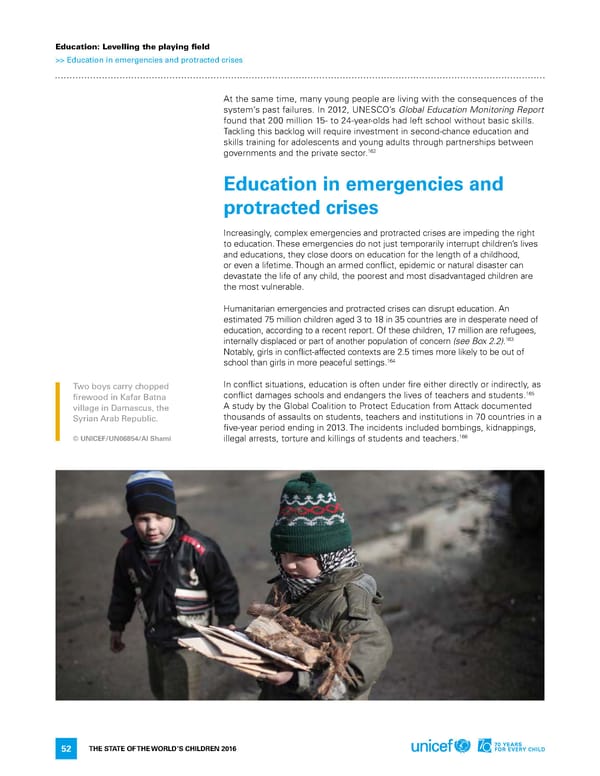Education: Levelling the playing field >> Education in emergencies and protracted crises at the same time, many young people are living with the consequences of the system’s past failures. in 2012, UneSCo’s Global Education Monitoring Report found that 200 million 15- to 24-year-olds had left school without basic skills. Tackling this backlog will require investment in second-chance education and skills training for adolescents and young adults through partnerships between 162 governments and the private sector. Education in emergencies and protracted crises increasingly, complex emergencies and protracted crises are impeding the right to education. These emergencies do not just temporarily interrupt children’s lives and educations, they close doors on education for the length of a childhood, or even a lifetime. Though an armed conflict, epidemic or natural disaster can devastate the life of any child, the poorest and most disadvantaged children are the most vulnerable. humanitarian emergencies and protracted crises can disrupt education. an estimated 75 million children aged 3 to 18 in 35 countries are in desperate need of education, according to a recent report. of these children, 17 million are refugees, 163 internally displaced or part of another population of concern (see Box 2.2). notably, girls in conflict-affected contexts are 2.5 times more likely to be out of 164 school than girls in more peaceful settings. Two boys carry chopped in conflict situations, education is often under fire either directly or indirectly, as 165 firewood in Kafar Batna conflict damages schools and endangers the lives of teachers and students. village in Damascus, the a study by the Global Coalition to Protect education from attack documented Syrian Arab Republic. thousands of assaults on students, teachers and institutions in 70 countries in a five-year period ending in 2013. The incidents included bombings, kidnappings, © UNICEF/UN06854/Al Shami illegal arrests, torture and killings of students and teachers.166 The STaTe of The World’S Children 2016 52
 70 Years for Every Child Page 67 Page 69
70 Years for Every Child Page 67 Page 69